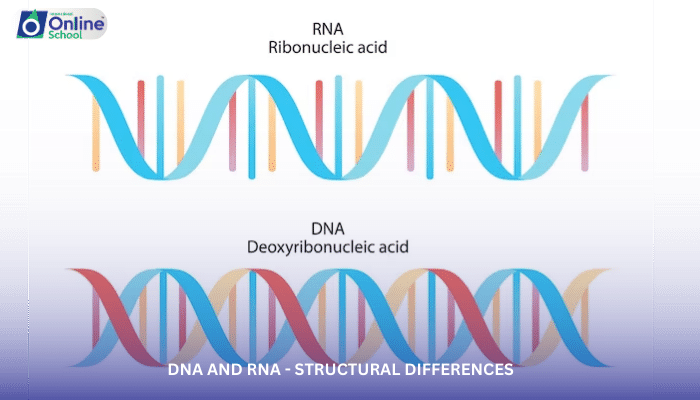
Learning Outcomes
By the end of this lesson, students should be able to:
i. Differentiate between the structural features of DNA and RNA, highlighting their similarities and differences.
ii. Explain the concept of the double helix, the intricate structure of DNA that safeguards genetic information.
iii. Describe the single-stranded nature of RNA and its role in transmitting genetic information from DNA to ribosomes for protein synthesis.
iv. Appreciate the significance of the structural differences between DNA and RNA in enabling their distinct functions in genetic information storage and transfer.
Introduction
DNA (deoxyribonucleic acid) and RNA (ribonucleic acid) are the fundamental molecules that carry the genetic code of all living organisms. While they share many similarities, these nucleic acids exhibit distinct structural features that contribute to their unique roles in genetic information storage and transfer. Understanding the structural differences between DNA and RNA is essential for comprehending their specialized functions in the intricate processes of life.
i. DNA: The Double Helix - A Secure Vault for Genetic Information
DNA, the molecule that holds the blueprint of life, exists primarily as a double helix, a two-stranded structure formed by complementary strands held together by hydrogen bonds between base pairs (A:T and G:C). This unique structure provides several advantages for DNA's crucial role in genetic information storage:
Stability: The double helix provides stability and protection for the genetic code, preventing damage and ensuring accurate replication during cell division.
Accessibility: The exposed DNA bases in the grooves of the double helix can be accessed by enzymes involved in DNA replication and transcription, the processes of copying and transferring genetic information.
Compactness: The double helix allows for efficient packaging of a large amount of genetic information within a compact structure.
ii. RNA: The Single Strand - A Messenger of Genetic Information
RNA, the molecule that carries genetic information from DNA to ribosomes for protein synthesis, typically exists as a single-stranded molecule. This structure enables RNA to perform its distinct functions:
Transcription: RNA molecules are synthesized from DNA during transcription, using the DNA sequence as a template to create a complementary RNA strand.
Translation: RNA molecules serve as messengers, carrying the genetic code from DNA to ribosomes, the cellular machinery responsible for protein synthesis.
Versatility: RNA exists in various forms, including messenger RNA (mRNA), ribosomal RNA (rRNA), and transfer RNA (tRNA), each with specialized roles in protein synthesis.
iii. Structural Differences: Enabling Distinct Functions
The structural differences between DNA and RNA reflect their specialized functions:
- DNA's double helix provides stability and protection for genetic information, ensuring accurate replication and transmission.
- RNA's single-stranded nature facilitates its role as a messenger molecule, allowing for efficient transcription and translation.
DNA and RNA, despite sharing many similarities, exhibit distinct structural features that enable their specialized functions in genetic information storage and transfer. The double helix of DNA safeguards the genetic blueprint, while the single-stranded nature of RNA facilitates its role as a messenger, carrying genetic instructions from DNA to ribosomes for protein synthesis. Understanding these structural differences is crucial for appreciating the intricate molecular processes that underpin the diversity and complexity of life.